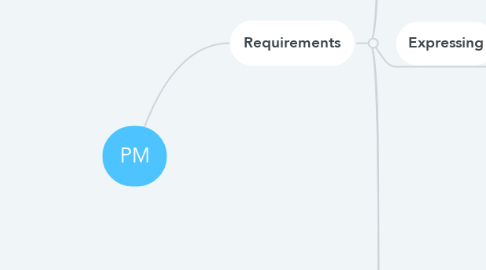
1. Requirements
1.1. Eliciting
1.1.1. With client
1.1.1.1. Take notes
1.1.1.2. Ask good questions
1.1.1.3. Engage in a discussion with your client about the product
1.1.1.4. Get the development team involved with the client
1.1.1.5. Provide insights on how the needs and wants of a product can be feasibly achieved
1.1.2. Without client
1.1.2.1. End-user interviews and observations
1.1.2.2. Feasibility studies with focus groups
1.1.2.3. Consulting similar projects
1.2. Avoid Epic User Stories (too broad)
1.3. Expressing
1.3.1. representations
1.3.1.1. use case
1.3.1.1.1. UC name
1.3.1.1.2. actors
1.3.1.1.3. goals
1.3.1.1.4. triggers
1.3.1.1.5. pre/post conditions
1.3.1.1.6. flows
1.3.1.1.7. exceptions
1.3.1.1.8. qualities
1.3.1.2. user story
1.3.1.2.1. US number
1.3.1.2.2. Who, What and Why of the requirement
1.3.1.2.3. validation
1.3.1.3. storyboard
1.3.1.3.1. Tells the steps of a feature's journey
1.3.1.3.2. Personas
1.3.1.3.3. Data flow diagrams
1.3.1.4. wireframes / mock-ups
1.4. Prioritizing
1.4.1. questions
1.4.1.1. What must be done to make the product successful
1.4.1.2. What should be done but it's not critical
1.4.1.3. what could be done to improve but it's not necessary
1.4.2. Story Maps
1.4.2.1. Tool to organize and prioritize stories
1.5. Analysing
1.5.1. Resolve potential conflicts
1.5.2. Ensures you identified the right requirements
1.6. Managing
1.6.1. Organize and refine the requirements
1.6.2. Keeps track of priorities, analyses and changes
1.6.3. Product Backlog
